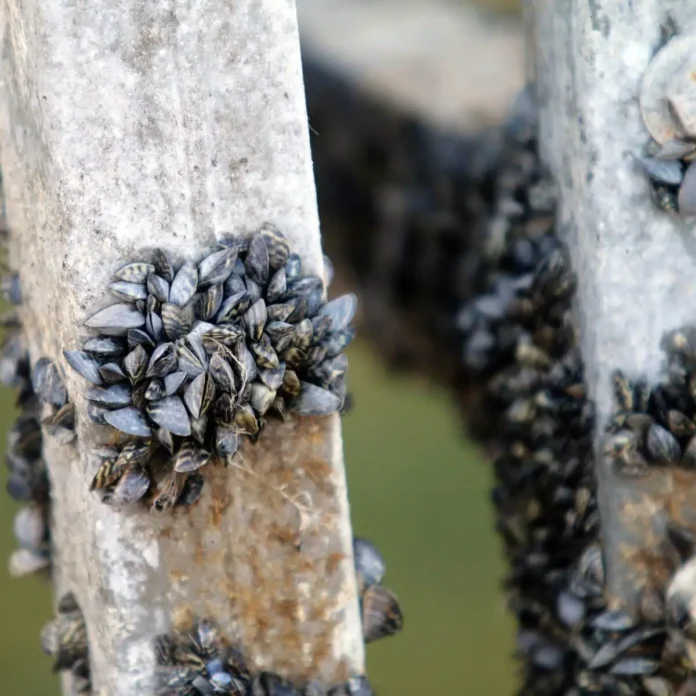Invasive alien species are any animals, pathogens, plants, and other organisms that are non-native to an ecosystem. They become invasive when the growth of their population starts to cause harm to the native beings in the area. The impact includes the decline or even elimination of native species due to competition, predation, etc. With that being said, we are going to discuss the 10 world’s worst invasive alien species below. Let’s find out what they are with me!
1Argentine Ant
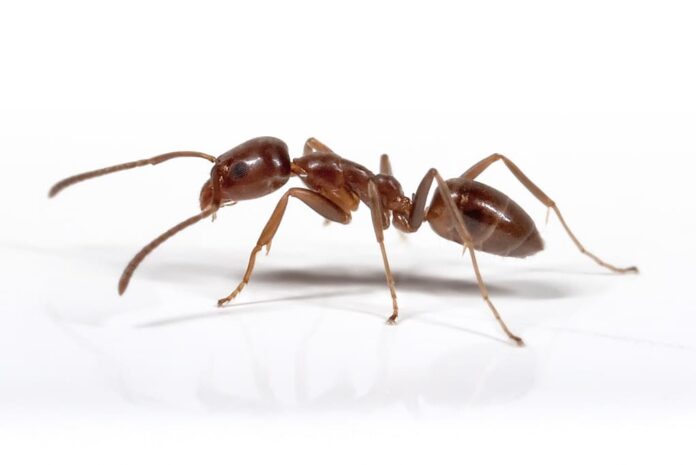
We all know that ants are everywhere but it is not a simple sight anymore when they become invasive. Argentine ants are native to Northern Argentina, and now these ants occur in most regions with Mediterranean climates or with moderate to high temperatures. It is a globally distributed invasive pest in at least 15 countries on 6 continents in agricultural, natural, and urban habitats. Argentine ants are small but their colonies are large with many workers and multiple queens. During kitchen invasion, it is also uncommon to see 2 or 3 queens foraging along with the workers. Their colony nests can be anywhere from the ground and leaf litter outside to cracks in concrete walls and other spaces inside the house.
First of all, these ants establish super colonies where many nests are closely packed together which increases the colony growth to spread rapidly. Even if they do not bite, they are still nuisance pests in households when they enter houses in search of food or water. The worst part is their potential to tend to plant pest insects such as aphids, mealybugs, and scales. To get sweet honeydew from those insects, these ants not only provide protection but also better food sources to them. So there will be more pests in the areas, and getting rid of them will be extremely challenging. Along with that, they also cause disruption to native ants, pollinators, and vertebrates. These ants raid beehives, and they are the enemies of beekeepers and bee colonies in general. The best way to get rid of them is to contact pest control when you suspect an infestation.
2Blady Grass
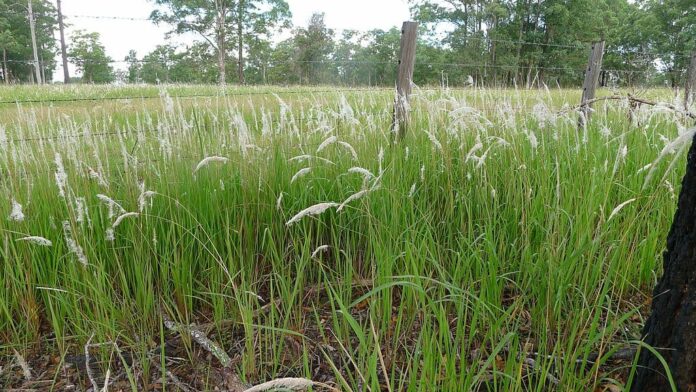
Goes by many names, blady grass is also known as cogon grass, cottonwool grass, kunai grass, spear grass, sword grass, and more. This grass grows up to 3 meters tall with leaves that are around 2 centimeters wide. It is native to subtropical and tropical areas in Africa, Asia, Australia, Melanesia, Micronesia, and Southern Europe. With the ability to adapt to a range of soil types, this grass can grow almost anywhere. Blady grass is a highly flammable pyrophyte with high biomass, and its rapid spread encourages more frequent wildfires. It is one of the most dangerous invasive alien species due to its ability to make wildfires burn faster, higher, and much hotter. This leads to the killing of native plants in the areas and even trees, making them one of the worst weeds in the world.
The only good thing about blady grass is that it has some benefits in cultivation and uses. It is useful as ground cover and soil stabilization near beach areas and other areas that are subject to erosion. People use it for thatching the roofs of traditional homes throughout Southeast Asia. Many varieties such as Japanese blood grass are also selected for garden use as ornamental plants. This grass is also useful in paper making and bags and mats weaving as well as traditional Chinese medicine. Despite all these, it is still an invasive species because its population spreads too fast through its small seeds by wind.
3Cannibal Snail

The name says it all, the cannibal snails are carnivorous and they feed on their own kinds. It also goes by the name rosy wolfsnail, and these predators hunt and prey on other snails and slugs. While the lifespan is only around 2 years, these snails definitely live long enough to do plenty of damage. Their ability to move fast allows them to catch up with other slugs and snails while hunting. It uses slime trails to track its prey, and it actually uses the same tactic to track potential mates. If the prey is smaller, cannibal snails will ingest it whole or suck it out of its shell. Cannibal snails actually prefer smaller snails because they are easier and quicker to consume.
Originally, these invasive alien species were native to the Southeastern United States including Florida and Georgia. They live in gardens, hardwood forests, landscapes, and roadsides, especially areas where other slugs and snails are abundant. However, these gastropods have become an invasive species in many areas outside its range such as Hawaii. They hunted the O’ahu tree snails which are the endemic snails there to extinction within the first year. Years after, cannibal snails caused the extinction of 7 more native snail species in Hawaii. That was just Hawaii alone, these slimy predators also caused the extinction of over 230 native slug and snail species on other islands. This is very bad it affects the food chain of other animals and harms the biodiversity. Hopefully, there will be measures to prevent them from harming other native species in the wild anymore.
4Chinese Mitten Crab
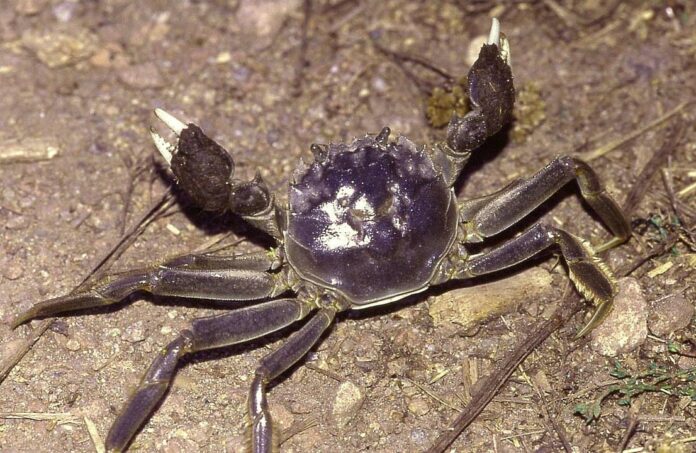
By the look at those furry claws, you can tell why these crabs got their name. Chinese mitten crabs are burrowing crabs that are native to coastal habitats, estuaries, and rivers across East Asia. The moment they were introduced to Europe and North America, they became an invasive alien species right away. While their diet is on regular prey such as dead organic material, fish, mussels, snails, and worms, their invasion is rather on something different. The burrowing nature of the Chinese mitten crabs does not only clog drainage systems but also damages embankments and erosion. As their invasion spreads, these decapods also begin to damage local dams, destroy fishing nets, and hurt native fish species. In Germany alone, the damage was up to 80 million Euros.
Just like other invasive alien species out there, this one also has a strong ability to adapt to various habitats. It is surprising to know that these crabs can survive highly modified aquatic habitats such as polluted waters. On top of that, they can also tolerate and uptake heavy metals such as cadmium and mercury easily and effortlessly. Back at home, Chinese mitten crabs are so popular in the culinary industry they are a delicacy in high demand. Chinese mitten crabs from Yangcheng Lakes are the ones people love to eat though they are quite rare. They are common as food despite the fact that they are the host of liver fluke. Not to mention the possibility of carrying several crustacean diseases such as crayfish plague, no doubt why they are among the worst invasive species.
5Giant Sensitive Plant

This is a little surprising to me because this was one of my favorite flowers when I was a kid. I was always so excited every time I saw one of them, still am. Giant sensitive plant also goes by the name giant false sensitive plant or nila grass. The distribution of this plant is across the Americas, Oceania, Indochina, and South and Southeast Asia. What I only know about it are the pretty round pink flowers and the sensitive leaves that curl up when touched. But what I missed is that this plant is an erect shrub or scrambling climber that can reach a height of 3 meters. Another thing that I missed is, of course, the fact that it is one of the worst invasive alien species.
Giant sensitive plants are fast-growing plants with the ability to tolerate a wide range of climate and soil conditions. They spread in various ways such as contaminated earth, flowing water, machinery, stock, and vehicles. This thing can grow anywhere from cane fields and riverbanks to roadsides, wet pasture lands, and more. More than that, its climbing ability also allows it to smother crops and other plants or shade out light-demanding species. Without any intervention, they can quickly form strong thickets that are impenetrable which affects the movement of animals and people. And when dry, it can also constitute a wildland fire hazard as well. The worst part is all parts of this plant are toxic to grazing animals. Fortunately, there are many methods to prevent the spread during early detection.
6New Guinea Flatworm
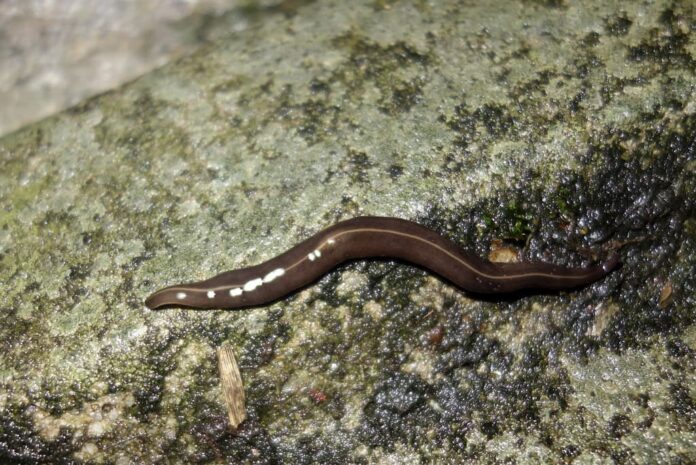
Looks like a leech but is not, the New Guinea flatworm is 4 to 12.5 centimeters on average. It has a shiny dark brown or black body with a pale stripe running down the middle. The underside is pale gray to pinkish beige, and its long snout-like head has 2 eyes sitting back from the pointed tip. As the name suggests, they are native to New Guinea but they were accidentally introduced to many other countries. At first, they were introduced to 2 Pacific islands to control the giant African land snail invasion. Things didn’t go well and the invasion of this flatworm is just another disaster.
Originally, they inhabit tropical areas but their adaptation allows them to live pretty much anywhere. Now, they are in almost all temperate regions such as agricultural, coastland, disturbed areas, natural forests, riparian zones, wetlands, and more. They feed on normal food such as arthropods, earthworms, land snails, slugs, and other small invertebrates. Not different from the cannibal snails, this one also caused the decline of native snails in its non-native range. That is not all, these flatworms are potential hosts for the rat lungworm parasite that can affect animals, humans, and pets. The invasion is quite bad in many Florida counties and many parts of the world. It is not a pleasant sight to come across them in the garden or yard, let alone their nuisance.
Do you know that even if you cut them into 20 pieces, they will just grow into 20 new worms? Direct touch means direct exposure to their toxic skin that can cause an allergic reaction. And let’s face it, why would anyone want to touch these things with a bare hand? This is why the best method to get rid of these flatworms is by pouring boiling water on them.
7Purple Plague
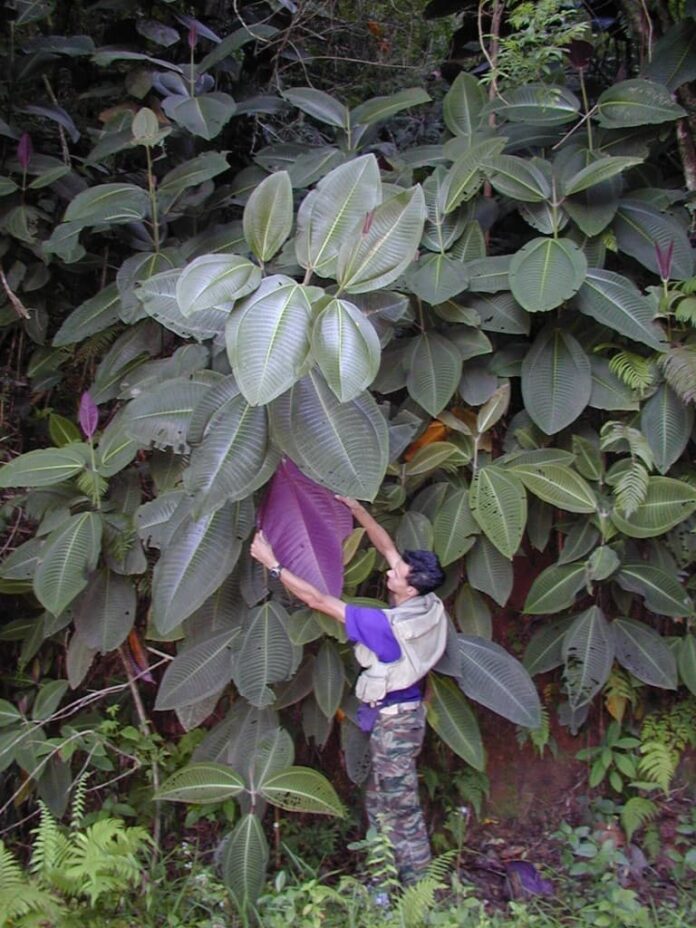
At a glance, there is nothing serious in sight because everything looks pretty and bright. And that is the problem because what we see here is not as healthy as it appears. The purple plague is caused by Miconia which is a highly invasive weed species that can cause serious damage. This weed can quickly form monocultures by shading out its competitors which damages rainforests. It thrives in tropical and subtropical areas, and it has wiped out natural forests by replacing the native vegetation. Miconia is native to Central America, South America, and Mexico but its invasion stretches across Australia and many other countries. On some islands like Tahiti, this weed alone destroyed and invaded 65% of the island, causing endemic plant species to be endangered. While going by purple plague in Hawaii, Miconia goes by green cancer in Tahiti.
So how can this weed become an invasive alien species? It has tiny purple fruits and each can contain about 120 to 230 minuscule seeds. These fruits are sweet and many animals and birds love them, and that is one way that the seeds are dispersed. On top of that, a young tree can produce up to 200,000 seeds in its first fruiting season. The combination of the two factors makes it an invasive threat. A Miconia tree can grow up to 15 meters tall, and it has large leaves that are dark green above and dark purple below. Most trees grow quickly and close together so those large leaves shade out all the space below. Plus its shallow root system can cause soil erosion, any shorter plants that grow around it will all perish.
8Spongy Moth

The story is somehow too funny to be true but that was how things started. So over a hundred years ago, spongy moth caterpillars were brought into the US from France for research as a possible source for silk production. Just like in some animation, there are caterpillars that made an escape and found home outside the lab. The twist is that those caterpillars have been plaguing forests and landscapes on and off since then. Despite the multiple control methods, seeing a whole bunch on your trees can be quite traumatizing.
Spongy moth invasion is the true definition of nightmares, those caterpillars squirming together is not a pleasant sight. A female spongy moth lays an egg mass that can be anywhere from 100 to 700 eggs, now imagine those eggs hatching all at once. The small caterpillars are dark brown to black in color, and they are super fuzzy. Touching them bare hand is not a good idea because their tiny hairs carry histamines that can cause itchy red rash. Truth is, no one would want to touch that.
The invasion of spongy moths affects the health and life of trees because they feed on leaves. The trees on the menu are apple, aspen, basswood, birch, crabapple, hemlock, hickory, maple, oak, pine, spruce, and willow. Young larvae chew small holes in the leaves while older ones feed from the outer edge of the leaf toward the center. They will feed until the tree is stripped before they go in search of new food sources. In some years the damage is minor while in others the leaf damage and tree defoliation are very noticeable. Tree defoliation reduces a tree’s overall health and resistance, making it more susceptible to diseases and pests leading to death.
9Yellow Crazy Ant

The name kind of gives away what it is already, right? Actually, they got this middle name due to their frantic movements and frequent changes in direction when disturbed. The yellow crazy ants have long legs and antennae that make them one of the world’s largest invasive ant species. However, the yellow crazy ant also goes by the name long-legged ant or Maldive ant as well. Now, don’t let the second nickname confuse you because these ants are native to Asia, living in moist tropical lowlands. This ant species has the opportunity to spread its invasive legacy across the globe via international shipping and trade. Their invasion devastates local flora and fauna while impacting agricultural and horticultural production at the same time.
Not different from other invasive alien species out there, this one also spread quickly. This ant species can easily dominate new habits and establish their colonies because of their aggression towards other ants and efficient recruitment. On the other hand, they are not aggressive between colonies of their kind which allows them to form super colonies. That results in extremely large interconnected nests containing hundreds of queens and millions of ants. More ants mean more mouths to feed, and they work together to fully exploit the resources in their environment. As a result, their teamwork reduces food and habitat availability for native species. And just like other ants, they also protect sap-sucking pest insects such as mealybugs and scales which increases their numbers too.
10Zebra Mussel
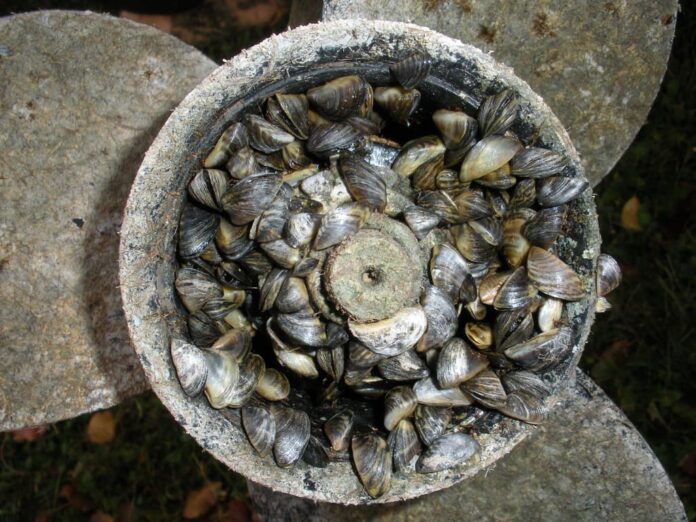
Native to Eurasia, zebra mussels look absolutely harmless at a glance. They are freshwater mussels that come from the lakes in Southern Russia and Ukraine. But they were accidentally introduced to many other areas then became an invasive species ever since. The moment they reached the waters in different parts of the world, they began to threaten the native species. They disrupt the ecosystems by monotypic colonization, meaning they cover the areas with a large population which is virtually impossible to remove. Their large number do not only damage harbors and waterways along with ships but also power plants and water-treatment plants. They grow so densely that they can block pipelines, and power plants must also spend millions of dollars to remove them from clogged water intakes. Water-treatment plants are the main victims because the water intakes bring the microscopic free-swimming larvae directly into the facilities.
Zebra mussels are filter feeders and they filter out algae, and a large population can quickly clear the water of all floating particles. Clear water sounds good but that causes food source shortages for native species of fish and mussels that feed on algae and plankton. And clear water also means better water clarity which makes it easier for visual predators to hunt. These mussels are responsible for the near extinction of many species by outcompeting native species for food. Even worse, they also attach to native clams and mussels, incapacitating and suffocating them, and that is horrible. Another thing is that their shells are very sharp they can cut people’s feet. So if you want to swim where their population is an invasion, you will need to wear water shoes.
Related Post: Dangerous Invasive Animals

